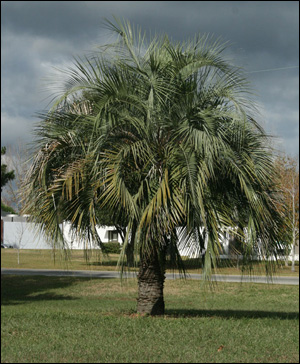Pindo Palm

Florida is known for its palm trees, but not all palms work well in the all parts of the state, especially the colder corners.
Perfect for North Florida
The pindo palm is a great choice for Florida gardens, especially those in northern Florida where the temperatures sometimes dip below freezing. This versatile palm tolerates temperatures down to 5 degrees Fahrenheit, and can even be found growing up the East Coast into the Carolinas.
In addition to its cold hardiness, the pindo palm is also well-liked for its striking foliage. The palm is graced with feathery, blue-grey fronds that grow with a gentle curve and can reach up to 6 feet in length.
Pindo palms are slow growers, but these elegant palms can reach fifteen or twenty-five feet tall when mature and work great as specimen plants in the middle of a lawn.
Establishment and Care
The pindo palm will grow well in either full sun or partial shade in a variety of soil types and is moderately salt-tolerant. As with most palms, the pindo palm will benefit from a regular fertilization schedule. Select a palm special fertilizer with minor elements and apply four to six times per year, using one to pounds of fertilizer per application.
The pindo palm is scientifically known as Butia capitata and is native to Brazil, Argentina and Uruguay. This palm is also sometimes called “jelly palm” because the plant produces its edible yellow fruits that mature in summer and can be made into jelly.
The fruits are sometimes called pindo dates and can be messy on sidewalks or patios, so you may want to plant the tree at least ten feet from paved surfaces.
One other minor disadvantage to the pindo palm is that it does not shed dead fronds automatically, so it may require some pruning to keep it looking tidy.
For more information on pindo palms, contact your county Extension office.
